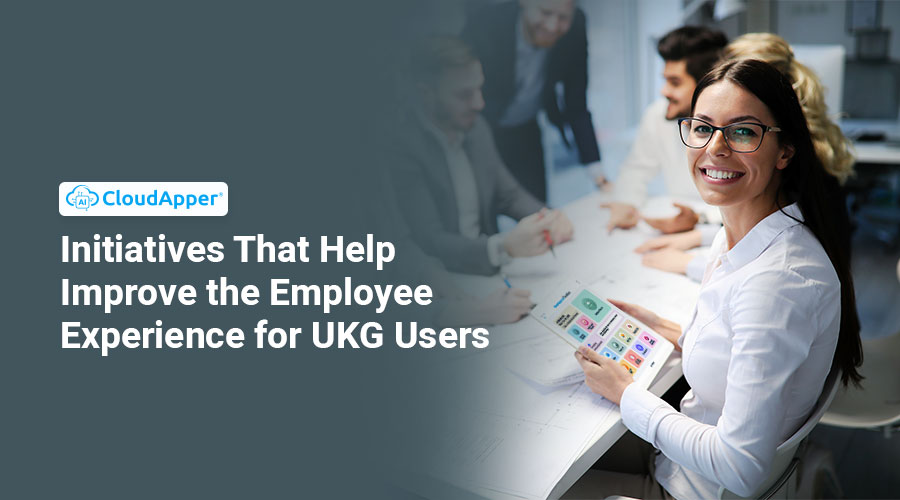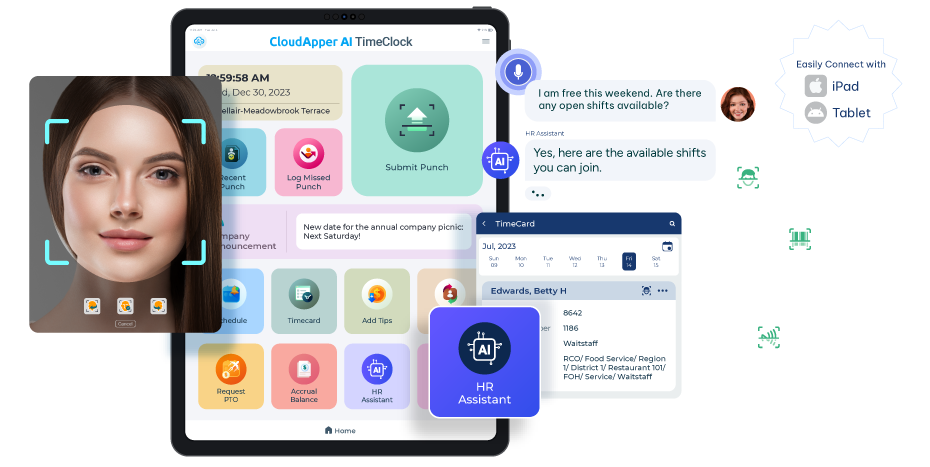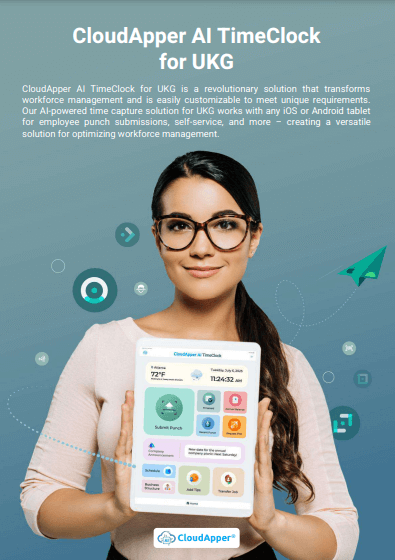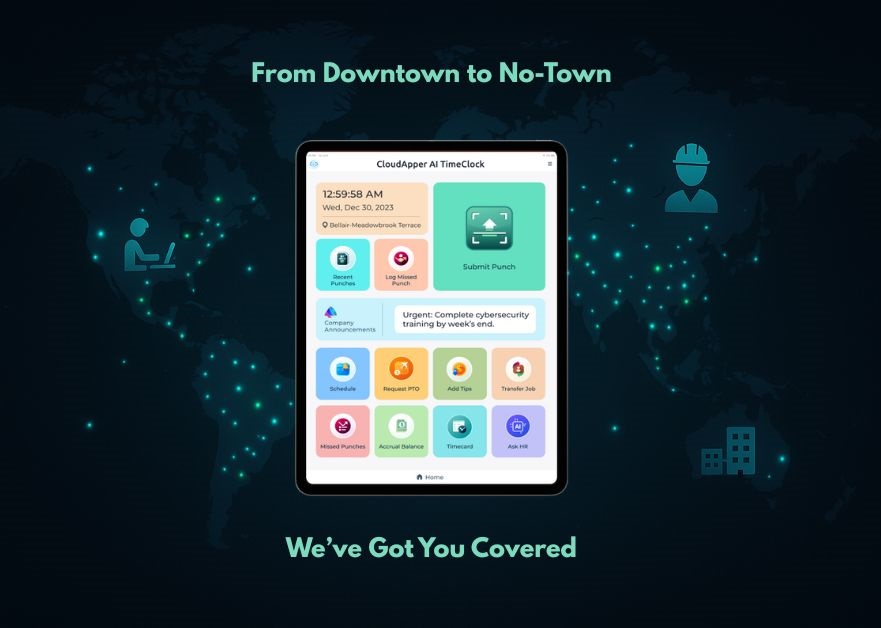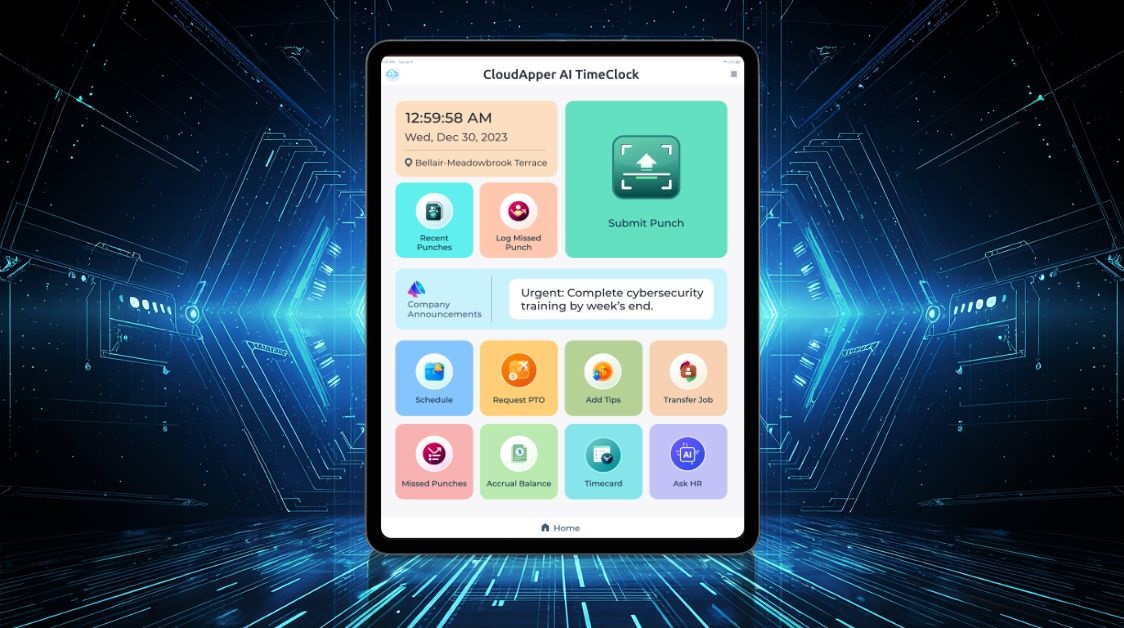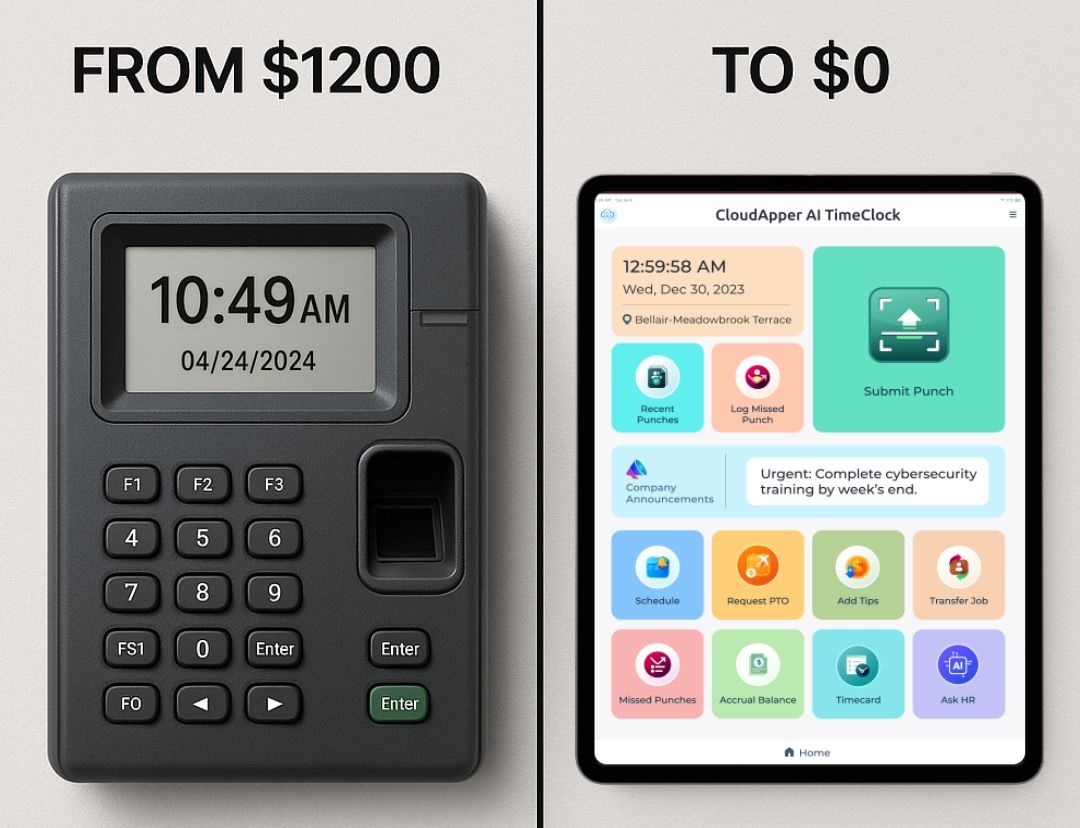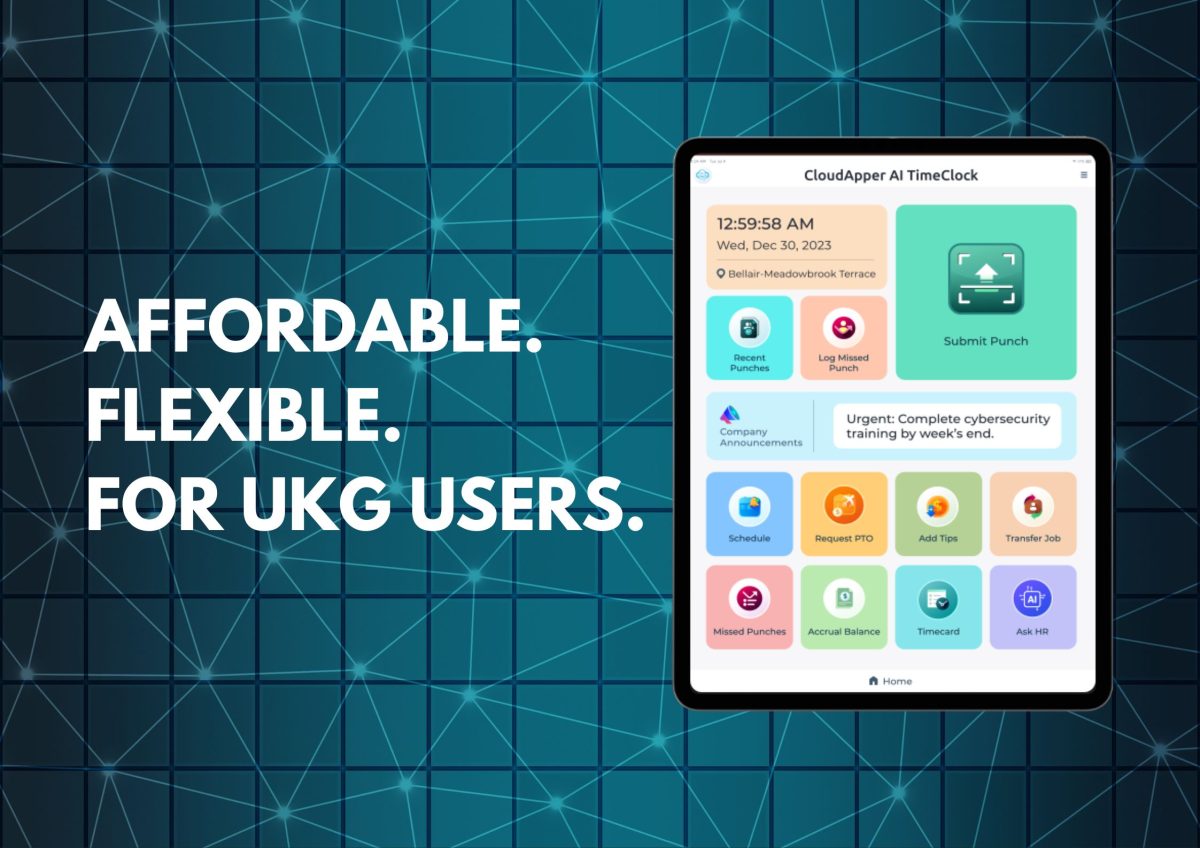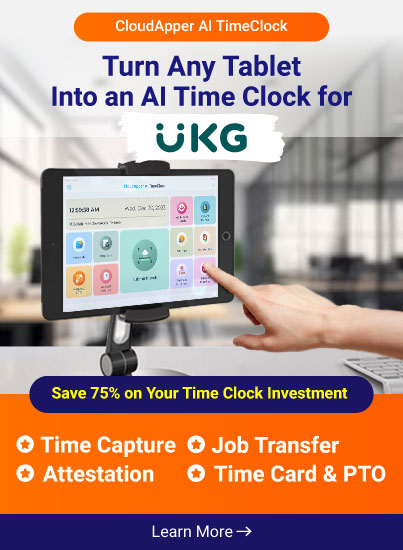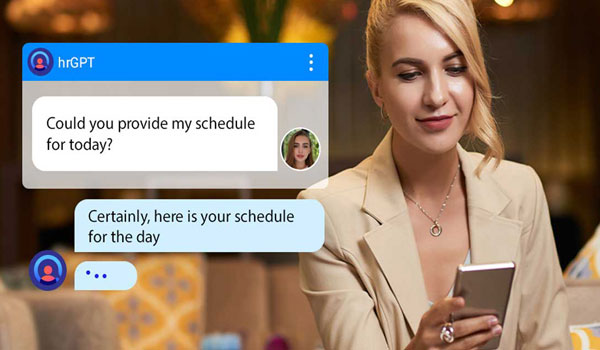Organizations need to focus on improving employee experience for several reasons - learn about several initiatives that can help them with it and how CloudApper AI can help UKG customers with it.
Table of Contents
Employee experience, something that includes all of the employee’s interactions, perceptions, and sentiments throughout their journey in an organization, has emerged as a paramount factor in organizational success. Improving employee experience isn’t just an added perk but crucial for companies that are seeking to enhance productivity, foster engagement, and reduce employee turnover rates. This is especially crucial for manufacturing, construction, and healthcare industries, where sizable workforces require meticulous attention to ensure a positive workplace environment and bolster overall organizational performance. While most of these organizations typically use HCM solutions like UKG for workforce management, let’s take a look at some initiatives they can take to improve employee experience further.
For more information on CloudApper AI TimeClock for UKG visit our page here.
Initiatives That Help Improve Employee Experience for UKG Users
Ensuring Transparency Between Leadership and Employees
In order to improve employee experience, organizations need to ensure that their employees hear from the leadership team frequently regarding updates. Such communication should always be transparent and honest. Instead of focusing only on the sales figures, leadership should also focus on boosting employee morale – inspiring them to do even better. When employees perceive leadership as trustworthy, compassionate, and inspiring, the former will go the extra mile and will have a sense of alignment and commitment toward the organization.
Gather Employee Feedback
An organization that listens to its employees knows exactly what they want – something that not only helps understand their underlying needs but also uncovers unforeseen gaps and hidden problems. Using CloudApper AI, UKG customers can easily gather employee feedback for incorporating it, if applicable. For instance, the CloudApper AI TimeClock can be used to gather employee feedback. Whenever employees clock in or out, they can be presented with questions for capturing employee feedback regarding specific issues or carry out important surveys. Utilizing such modern tools helps facilitate the continuous capture of employee feedback easily. However, employees must already be accustomed to open communication for this to work. For organizations where employee feedback isn’t utilized properly or open communication doesn’t exist, this simply won’t work.
Ensuring Effective Communication
Effective communication is crucial for creating and nurturing healthy relationships with employees. While most HR team members do acknowledge its importance, the demands of other tasks and external communication often overshadow interacting with the employees.
UKG users need to ensure that they’re communicating with their employees properly or are using tools that facilitate enhanced communication. For instance, CloudApper AI has an AI assistant that helps UKG users communicate with their employees easily regarding HR policies, accruals, and so on. Employees can simply use their phones to ask HR-related queries – CloudApper AI can answer their questions naturally and quickly – helping improve employee experience. With CloudApper AI, the employees get to communicate regarding their HR-related queries, and the UKG users can also focus on their core tasks while having CloudApper handle these specific conversations.
Ensuring Diversity and Inclusion
Diverse workforces can substantially enhance human capital outcomes, including increased employee engagement, creativity, employee belonging, and reduced turnovers as organizations get access to a wide range of employees. Organizations that have dedicated D&I leaders have strategies in place that are committed to yielding such improvements. Fostering a diverse workforce necessitates not only the development and implementation of D&I strategies but also leveraging tools that help the UKG users with it – helping improve employee experience.
Holistic Focus On Your Employees
Adopting a comprehensive employee-centric approach demands a core focus on employee experience throughout the employee lifecycle. From the initial onboarding phase to eventual departures, every employee interaction serves as an opportunity to craft a positive experience. By viewing employee experience through the lens of the entire lifecycle, organizations can scrutinize critical junctures such as hiring fairness, communicating company values during onboarding, opportunities for growth and development, and the employee’s sentiments when they leave.
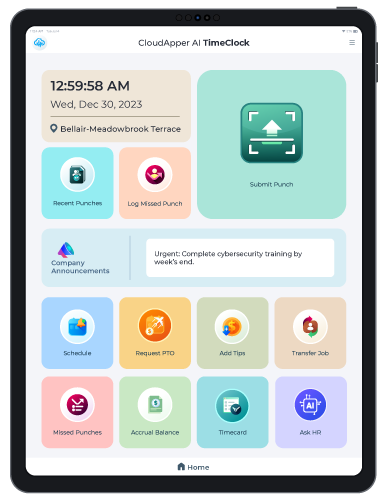
Ensuring Employee-Friendly Managers
The best managers always provide support to their subordinates regarding their tasks. Such managers set smart, transparent, and achievable goals for their teams, are open to feedback regarding decisions, provide advice to employees regarding their tasks, and facilitate learning opportunities that help employees grow. This not only helps the employees feel confident but also empowered – helping build their confidence. Organizations that want to improve employee experience need to not only work on new hires but also invest in manager development so that the supervisors possess the skills required to enhance the employee experience.
Empowering Employees
As per Deloitte, any ideal organization will provide their employees with purposeful work by ensuring two things – encouraging autonomy, that is, allowing employees to shape their work environment that helps optimize their performances, and nurturing smaller but independent teams that come up with ideas and make their own decisions to foster innovation. Doing so not only helps organizations improve the employee experience but also puts employees in charge of their tasks and projects – improving employee engagement and accountability.
Building a Positive Environment
Let’s face it – no matter what kind of lucrative benefits a company provides, if the work environment is toxic or not employee-friendly, employees will have a bad experience and will ultimately leave. A positive work environment requires the management to be supportive, set realistic goals, ensure transparency, promote employee well-being, and ensure work-life balance. Typically, workplaces with a positive environment elevate productivity, job satisfaction, and overall well-being – helping improve the employee experience.
Helping Employees Grow
Research indicates that only 43% of employees believe their employers provide sufficient growth opportunities, meaning that the rest of the employees perceive that there aren’t enough growth opportunities at their current workplace. Given that motivated employees thrive when challenged and engaged, organizations need to focus on providing them with ample opportunity to showcase their capabilities and grow. High-performing individuals typically want incentives such as better compensation, increased responsibilities, recognition, promotions, or training and development. When organizations provide ample growth opportunities to their employees, it not only motivates them to perform better but also to stay with the employers for a longer period of time.
Utilizing Appropriate Solutions
Utilizing technology is integral to improving the employee experience, and UKG customers have been doing so for years. However, UKG users can improve their employee experience further with the CloudApper AI TimeClock. This custom employee time capture system for UKG simplifies clock-in and out processes and transforms Android or iOS devices into efficient UKG time capture devices. It can do so much more than capture employee punch-ins and outs – the AI TimeClock empowers employees with self-service capabilities, from submitting PTO requests to accessing work schedules. It also enables data capture for compliance and enhances the overall employee experience.
Streamlining Employee Experience Is More Crucial Than Ever
In conclusion, elevating the employee experience for UKG HCM users demands a multifaceted approach that spans communication, feedback responsiveness, employee focus, diversity promotion, support from managers and leaders, a positive work environment, and so much more. Implementing these strategies can lead to an environment where employees thrive, translating into improved organizational outcomes.




